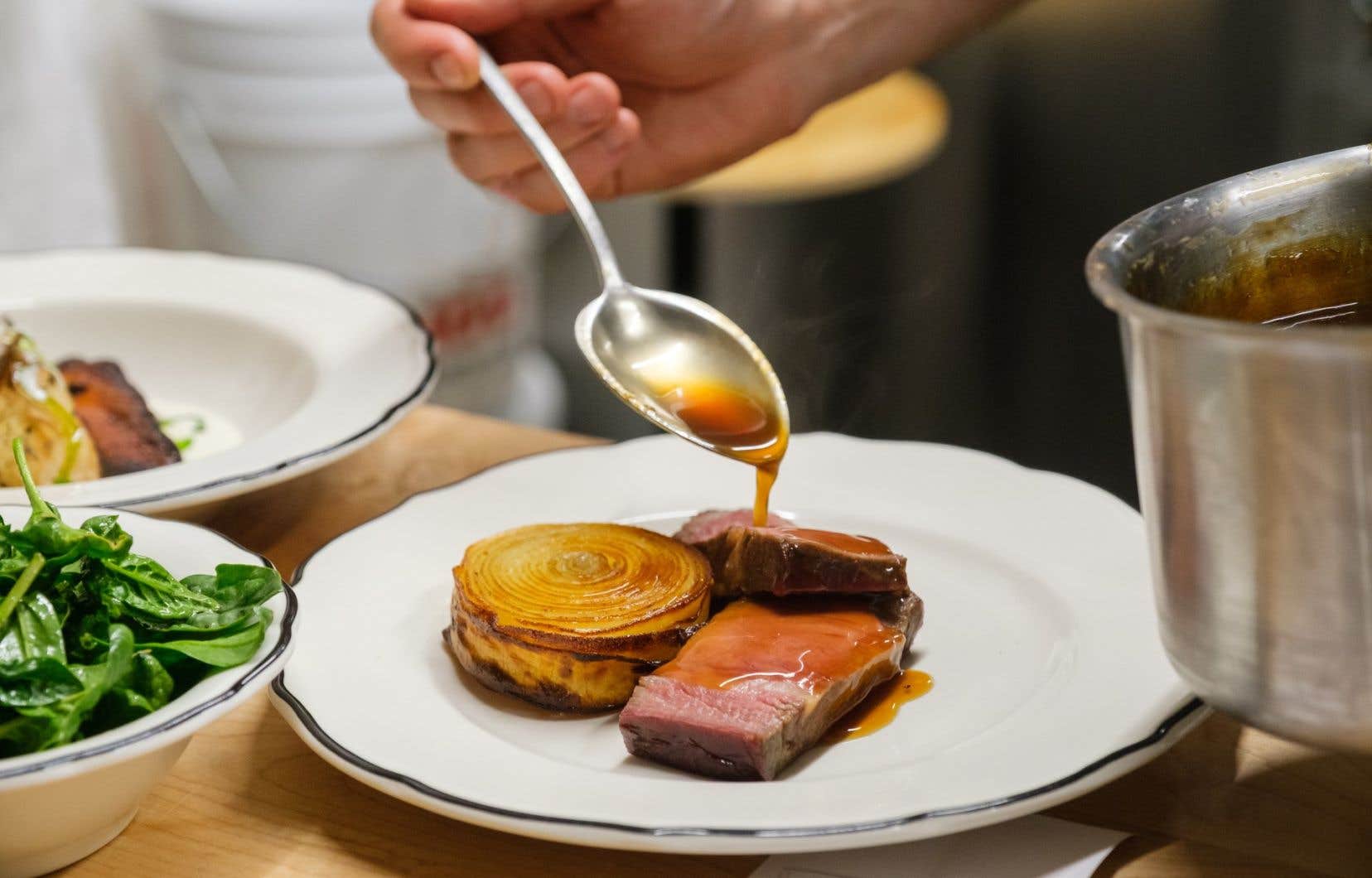This text is part of the special Pleasures notebook
The most recent project of market gardener Jean-Martin Fortier, the Espace Old Mill, in Stanbridge East, has been offering an innovative gastronomic experience in the heart of a huge vegetable garden since last spring and gives pride of place to both the vegetables he grows and ‘to the terroir of the Brome-Missisquoi region, summer and winter. And all this on a revalued heritage site which also includes a charming inn. A foray into the land of a true enthusiast.
You cultivate the land, you campaign for agriculture on a human scale and you have shared your knowledge of agroecology for around twenty years with projects such as Les Jardins de la grelinette, la Ferme des quatre-temps and the Institute market gardener. With the Espace Old Mill and its restaurant, however, you go even further, claiming to want to “reinvent the farmhouse table”. What do you mean ?
I have always done local farming without intermediaries, and it is a business model that I wanted to replicate with the restaurant to promote the work of our partners. Here, there is no big truck bringing us margarine! Rather, we are in direct contact with all the artisan farmers with whom we collaborate: the cheesemaker comes to deliver his cheeses to us, the dairy brings us the cream and butter, small breeders in the region provide us with the meat… and in good standing Generally, they are all located not very far away, within 60 kilometers around, except the salt, which comes from the St. Lawrence River. Despite everything, we don’t limit ourselves and chef Éric Gendron manages to make extraordinary dishes with what we have in season, all year round.
How will you be able to supply the restaurant with “seasonal” vegetables throughout the winter?
We want to demonstrate that, even in Quebec, we can eat seasonal food 12 months a year. This is our North Star for the restaurant. Yes, it is possible to grow vegetables in winter in a northern climate. In addition to our outdoor garden, where we produce around forty vegetables, we have a carbon-neutral greenhouse to supply the restaurant with leafy vegetables during the winter. They are planted at the beginning of September to reach maturity in mid-November. In the greenhouse, which is kept at five degrees Celsius, it’s like keeping them in the fridge! And from February, when the light returns, everything we cut starts to grow again. It’s crazy ! This second growth allows us to get to spring, when the first vegetables from the fields will be ready. So sourcing is really not a challenge, and I’m happy to say that. We imagined the project precisely for that: the land is located right next to the restaurant and the cellars are large enough to store a lot of root vegetables.
What vegetables are in the spotlight this season?
Éric and the team have just started working with root vegetables and Asian lettuces that grow in the greenhouse. Kohlrabi and celeriac are also served at this time, as is cabbage. I really like the idea of putting cabbage back in the spotlight on plates, but other than in salads, whether braised on the barbecue or in brine, for example. We also have radicchios, which are so beautiful and so good, not at all bitter like in summer. When they are harvested in autumn, they develop a completely different flavor. That’s always the game: don’t harvest too quickly, wait for the cold to change the flavor of the vegetables. The same goes for root vegetables; waiting for the first frost changes everything! Our Nordic style brings a unique flavor to our vegetables. We must be proud of it and put it forward more.
Growing the market gardeners of tomorrow
This content was produced by the Special Publications team at Duty, relating to marketing. The writing of the Duty did not take part.
